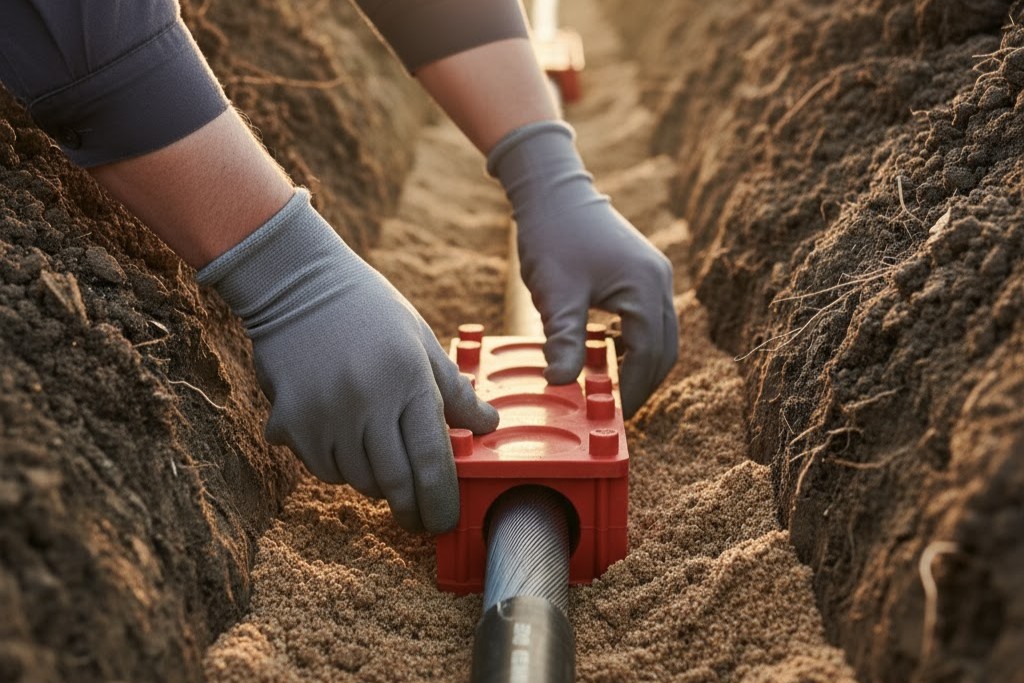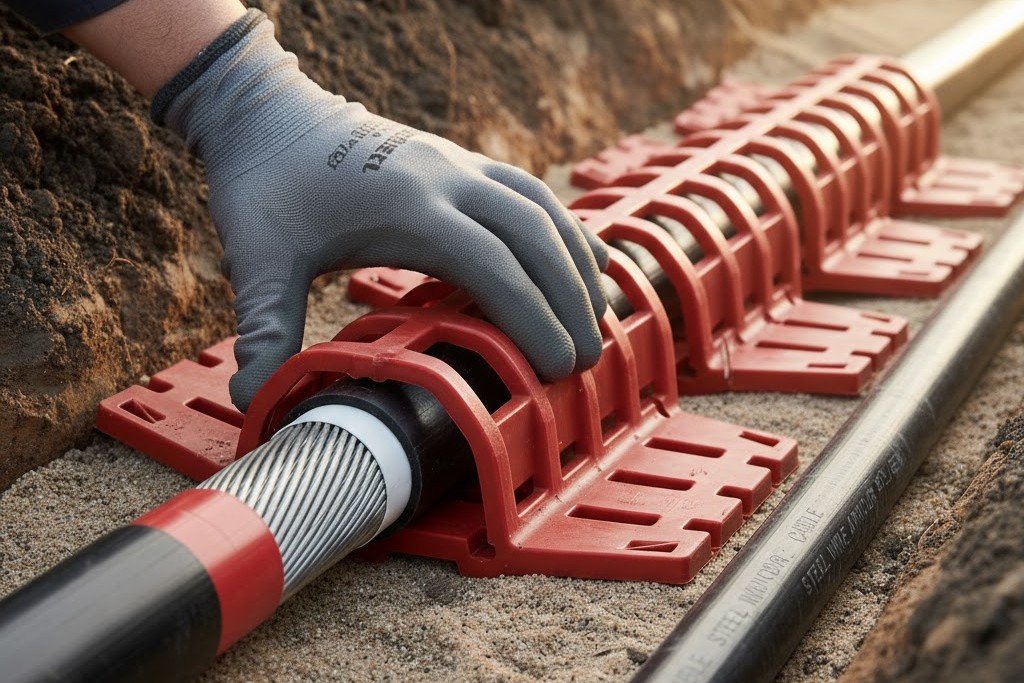SWA cables are the first choice for outdoor and underground electrical work, thanks to their strength, durability, and consistent performance in harsh environments.
If you’re an electrician, contractor, or engineer working on heavy-duty projects, understanding the benefits of SWA cable can save time, reduce failures, and improve overall safety.
Table of Contents
- What Are SWA Cables?
- Why Use SWA Cables Outdoors or Underground?
- SWA Cable Installation Tips
- Best SWA Cable Types for Outdoor Use
- Frequently Asked Questions
- Final Thoughts
What Are SWA Cables?

SWA stands for Steel Wire Armoured. These cables are built with a tough outer sheath and a steel wire armour layer just beneath it. This added protection helps the cable resist physical damage, pressure, and environmental wear.
Electricians often choose SWA cable for projects that involve outdoor power distribution, underground cabling, or areas with a risk of mechanical interference.
Here’s what sets SWA cables apart:
- Steel wire armour for superior mechanical protection
- Suitable for high-load and fixed wiring systems
- Withstands water, heat, pressure, and impact
- Available in various core sizes and voltage ratings
Why Use SWA Cables Outdoors or Underground?
When it comes to outdoor or underground power supply, durability is key. That’s why many professionals rely on SWA cables for outdoor applications where tough conditions demand extra protection.
Built for Tough Conditions
SWA cables are designed to handle external pressures like shifting soil, foot or vehicle traffic, and exposure to moisture. This makes them perfect for:
- Garden lighting systems
- Outbuilding power feeds
- Underground wiring for security and CCTV systems
- Industrial yard installations
Long-Term Safety and Performance
The steel wire armour isn’t just for protection. It also acts as a grounding path when properly earthed, improving electrical safety across the system.
Plus, with insulation options like XLPE and sheaths made from PVC or LSZH, you can match the cable to your specific environmental needs.
SWA Cable Installation Tips
Installing SWA cable correctly is key to getting the most out of it. While it’s not a complicated process, there are a few best practices that make a difference.
1. Use the Right Glands
Make sure to use metal or brass cable glands specifically designed for SWA. These grip onto the armouring for secure connections and effective earthing.
2. Plan Your Bends
Respect the bending radius of the cable to avoid damaging the internal conductors. A smooth installation is not only safer, but also extends cable life.
3. Underground Considerations
If you’re installing swa cable for outdoor use underground:
- Use sand bedding and cable tiles for added protection
- Avoid rocky or sharp backfill
- Ensure the sheath is UV- and water-resistant if partially exposed
Best SWA Cable Types for Outdoor Use
Not all SWA cables are the same. Choosing the right one depends on your installation requirements. Here are a few you should know:
1. Low Voltage SWA Cable
Perfect for 600/1000V systems like outdoor lighting and garden installations.
2. LSZH SWA Cable
Ideal for areas where smoke or toxic fumes are a concern, like public spaces or commercial buildings.
3. Fire-Resistant SWA Cable
Use in emergency lighting, alarms, and other critical systems where fire survival is needed.
4. Aluminium Core SWA Cable
Cost-effective for larger projects where cable weight and budget are key factors.
Frequently Asked Questions
1. Can I run SWA cable above ground?
Yes. Just ensure it’s clipped securely and protected from sunlight unless the sheath is UV rated.
2. Is armouring necessary for underground cabling?
Absolutely. The steel wire protects against crushing, impact, and accidental digs.
3. How deep should SWA cable be buried?
Typically 450mm in domestic installations and 600mm in commercial areas, with warning tape above the trench.
4. Can I cut SWA cable myself?
Yes, with proper tools like a hacksaw or cable cutter. Always deburr and use correct glands.
Final Thoughts
SWA cables offer a reliable and safe solution for installations that demand more than just a standard electrical wire. Their resistance to physical damage, weather conditions, and pressure makes them the top pick for underground and outdoor setups.
At Batt Cables, we stock a wide range of SWA cable types suited for everything from small outdoor lighting systems to large-scale commercial infrastructure. Our team is here to guide you through cable selection and SWA cable installation best practices.




